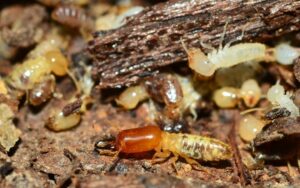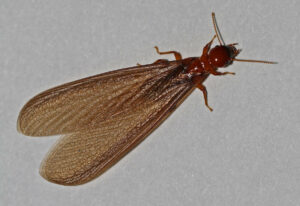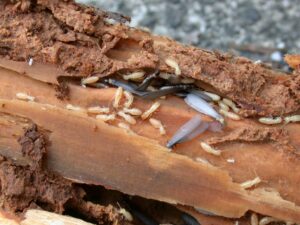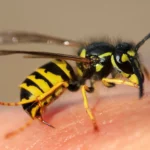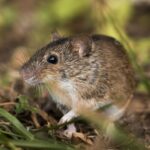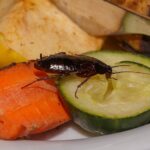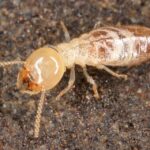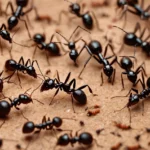Home » Pest Guide » Termites
Termites
Dealing with and treating termites in Florida are very common. Florida’s warm, humid climate makes it one of the most termite-prone states in the U.S. These silent destroyers cause billions of dollars in property damage each year, often without visible signs until it’s too late. Whether you live in a coastal city or inland community, termite prevention and early detection are essential to protecting your home’s structure and value.
In this guide, we’ll help you identify the four most common termite species in Florida — and show how professional termite control keeps your property safe year-round.
Common Termite Species
Florida is home to several termite species, but four stand out for their impact on homes and businesses. Each requires a specific treatment approach.
Signs of a Termite Activity
Even if you don’t see termites directly, the warning signs are often right in front of you:
- Mud tubes along walls or foundations
- Discarded wings near windows or lights
- Wood that sounds hollow when tapped
- Bubbling or cracked paint
- Doors or windows suddenly hard to close
- Droppings (frass) near baseboards or furniture
💡 If you spot any of these, schedule an inspection immediately – termites can cause damage long before they’re seen. Contact us Today >>
What Attracts Termites to Florida Homes
Florida’s climate provides termites with everything they need – warmth, moisture, and wood. Most infestations start when termites find easy access to food and water around your property.
1. Moisture and Humidity
Termites thrive in damp environments.
Leaky roofs, plumbing, or irrigation systems create perfect nesting conditions for subterranean and dampwood termites.
- Standing water near foundations
- Poor drainage or overflowing gutters
- Condensation around AC units or vents
- Crawl spaces without ventilation
💡 Even minor leaks can attract a new colony within weeks.
2. Wood-to-Soil Contact
Any wood that directly touches the ground – such as siding, deck posts, or porch steps – provides an easy path from soil to structure.
- Wooden fences and mulch touching walls
- Unsealed door frames or window sills
- Wooden landscaping borders
- Firewood stacked against the house
3. Warm Temperatures
Florida’s year-round warmth allows termites to stay active continuously. They swarm more frequently after spring and summer rains, seeking new nesting areas.
- Coastal humidity and rainfall increase colony survival
- Warm soil and shaded areas attract subterranean termites
4. Cellulose Sources
Termites feed on cellulose – the organic material found in wood, paper, and drywall.
- Structural lumber and subfloors
- Cardboard boxes in attics or garages
- Paper-backed insulation or wallpaper
- Wooden furniture stored outdoors
5. Cracks and Entry Points
Tiny gaps around foundations or utility lines allow termites to invade unseen.
- Expansion joints and foundation cracks
- Gaps around plumbing, wires, or vents
- Settling cracks in concrete slabs
⚠️ You don’t need visible wood damage for termites to enter — they can invade through openings as small as 1/32 inch.
How to Reduce Termite Attraction
- Fix leaks and reduce moisture quickly.
- Keep mulch and wood debris away from the foundation.
- Store firewood off the ground and at least 20 feet from walls.
- Seal cracks and maintain good ventilation.
- Schedule an annual termite inspection to catch early signs.
Termite Infestation FAQs
What’s the most common termite in Florida?
The Subterranean Termite, especially the Eastern and Formosan species, causes the majority of structural damage statewide.
When are termites most active in Florida?
Termites swarm mostly from March through July, but remain active year-round in Florida’s warm climate.
What’s the difference between Drywood and Subterranean termites?
Drywood termites live inside dry wood, while Subterranean termites build colonies underground and need moisture.
Can I prevent termites completely?
No system is 100% foolproof, but annual inspections and professional barriers drastically reduce your risk.
Are termite treatments safe for pets and family?
Yes. Our treatments use EPA-approved, pet-safe products applied by certified technicians.
Think You Might Have Termites?
Termites are silent but destructive – and in Florida, they can spread fast. Our licensed termite control specialists use advanced detection and treatment systems to protect your home year-round.
Schedule your free inspection and quote today, and get peace of mind knowing your home is termite-free.
Termite Damage in Florida Homes
Termites feed on cellulose in wood, flooring, drywall, and even insulation. In Florida, colonies thrive year-round and can weaken structural beams, floors, and roofs within months.
Common Areas of Damage:
- Wooden window frames and baseboards
- Subfloors and crawl spaces
- Roof trusses and attic beams
- Wooden decks and outdoor structures
🏠 The earlier you detect termites, the easier and cheaper the repairs.
How to Prevent Termites
- Schedule annual termite inspections >> with a licensed specialist.
- Keep soil and mulch at least 6 inches below siding.
- Fix leaks and eliminate moisture around foundations.
- Remove wood debris, stumps, and tree roots near your home.
- Use treated lumber for decks and fencing.
- Ensure crawl spaces have proper ventilation and drainage.

Professional Termite Control Services
DIY termite products rarely reach hidden colonies or queens. Our Florida termite control experts use advanced tools and treatments to eliminate active infestations and protect against future attacks.
We provide:
- Thorough termite inspections
- Colony baiting and monitoring systems
- Soil barrier applications
- Localized wood and wall treatments
- Preventive maintenance programs
Do you have another Pest Issue?
What our Customers Say about Us!
Trustindex verifies that the original source of the review is Google. Great service for the price tbhTrustindex verifies that the original source of the review is Google. Goat services and didn’t have a problem ever sense.Trustindex verifies that the original source of the review is Google. Best service hands down!! As a first time customer, all I know is this they definitely got the job done and will be recommending them to everyoneTrustindex verifies that the original source of the review is Google. I been having a bugs everywhere and been terrified and they help me so much getting the bugs awayTrustindex verifies that the original source of the review is Google. Did an amazing job helping me with my ants .Trustindex verifies that the original source of the review is Google. I was having problems with my roaches in my house and they did a good job getting rid of emTrustindex verifies that the original source of the review is Google. this man does really good he killed all the pests in my house 😮🫡Trustindex verifies that the original source of the review is Google. Very accommodating for emergency service request. Also prompt in time for appointments. Great company!!Verified by TrustindexTrustindex verified badge is the Universal Symbol of Trust. Only the greatest companies can get the verified badge who has a review score above 4.5, based on customer reviews over the past 12 months. Read more


